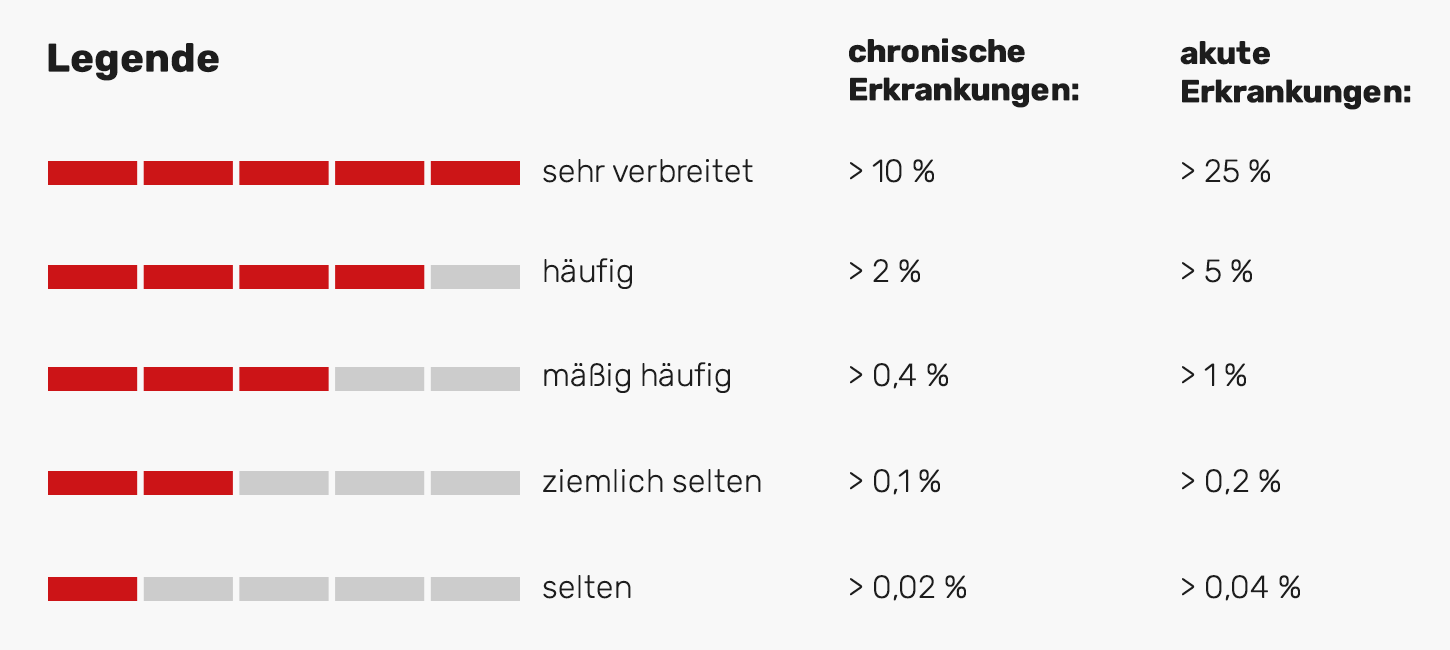
- The pulse in children is significantly higher than in adults.
- Due to different growth phases, a table that is staggered according to age only has a rough orientation function.
- Over the years, an initially very high pulse approaches the values of an adult more and more.
The pulse in children differs fundamentally from classic pulse tables that apply to adults. But what are the differences and what are the reasons for it??
In our guide we explain to you, what pulse values are normal in children and to what extent sport on the Pulse rate affects.
1. The pulse in young children
The heart beats faster in the first few years than later. In order to supply all important organs and muscles with sufficient oxygen, a smaller heart has to do a lot more. Accordingly, the resting heart rate rises and is not comparable to the normal values of an adult.
The following guidelines for heart rate (at rest) apply to small children:
| Age | Heartbeats in a minute |
|---|---|
| newborn | about 140 |
| Children up to 2 years | approx. 115 to 130 |
| Toddlers with 3 years | about 105 to 110 |
| Children with 4 years | about 95 to 105 |
| Children with 5 years | approx. 90 to 100 |
However, each child develops differently, so Deviations up and down normal are. Even a heart rate chart for adults does not provide you with reliable information about the extent to which the values are good, normal or too high. This can be determined in detail by a doctor as part of a performance test.
2. This is how children’s pulse develops over the years

The pulse soars rapidly when moving.
Since the pulse of children is already relatively high when they are at rest, the exercise pulse also differs significantly from that of an adult. Children can therefore run for a longer time with a pulse of over 200 without being at their absolute limit.
However, this does not apply across the board, so you should not draw any premature conclusions.
With regard to the resting heart rate, you can roughly use the following table:
| Age | Average pulse rate (at rest) |
|---|---|
| 6, 7 and 8 years | 90 to 95 |
| 9 and 10 years | 85 to 90 |
| 11 and 12 years | 80 to 90 |
| 13 and 14 years | 75 to 85 |
| 15 and 16 years | 70 to 82 |
| 17 and 18 years | 65 to 80 |
Generally, the resting heart rate of girls and women is slightly higher than that of boys and men. However, it plays in childhood and adolescence individual development plays a significantly larger role than gender.
Especially with larger leaps in development, the heartbeat can initially increase slightly in order to supply the additional body mass with sufficient blood and oxygen. The heart must first adapt to the new situation and thus continues to grow.
3. The influence of sport on the pulse in children
One-sided sport burdened:
At any age, sports make sense to promote and maintain health. However, children should not train too much and, above all, not too one-sided, to train all skills equally. Endurance sports should follow later. You can find out more about suitable sports in this article on Spiegel-Online.
Athletes generally have a significantly lower resting heart rate than untrained people. The maximum pulse, however, hardly changes.
Children who grow up with a lot of sport at an early age improve the performance of the heart. This manifests itself above all in a significant reduction in the heartbeat during physical exertion.
The reason for this is one improved oxygen absorption capacity and a simultaneous enlargement of the heart. This means that not only can more oxygen be transported, but also more oxygen can be absorbed by the body.
The pulse values for trained children and adolescents sometimes differ significantly from the table above. This applies in particular from the age of about twelve years.
Even if it makes sense to train endurance at a young age, it should Training for children and adolescents should be as diverse as possible. With regard to endurance sports, children who are especially trained as adults do not have better conditions than children who have trained in a variety of ways.
Tip: When training children, it should Quality of movement in the foreground stand.
4. Measure your pulse – how it works

The best way to measure the heartbeat in a child is on the wrist.
If you want to measure the pulse, use on best Middle and index fingers and measure the pulse directly on the wrist or on the carotid artery.
It is ideal if you measure for 30 seconds and multiply the value by 2. If you want to get the most exact value possible immediately after physical exertion, measure only 15 seconds and multiply the value by 4, otherwise the pulse rate will quickly decrease again.
It is much better if you wear a heart rate monitor during exercise. The most Models automatically record the values without you having to worry about them.
The following video shows one way to measure pulse and blood pressure:
5. Factors that increase the pulse in children and adults
If you have an overview of your average pulse rate, this can change due to several factors.
The following points are particularly relevant:
- drugs can both increase and slow the heartbeat.
- infections or fever is associated with an increase in pulse rate.
- Caffeine and alcohol also increase the pulse rate.
RELATED ITEMS
-

1 Age table 2 How do you measure heartbeats in crumbs? 2.1 Why is the heartbeat fast? 2.2 Baby’s low heart rate 3 pulses child in one…
-

Sport with children: advice for parents
Peter Großmann Sport is not only important for the well-being of adults, but also for that of children. Especially for a healthy physical…
-

Overweight and obesity in children
Overweight: Too high body weight compared to body size (above the 90% percentile curve of peers of the same sex; this corresponds to…
-

Rügen vacation with children – activities – sport
Recommendations for families with large and small children. Further information When you discover Rügen, the view of adults is different…
